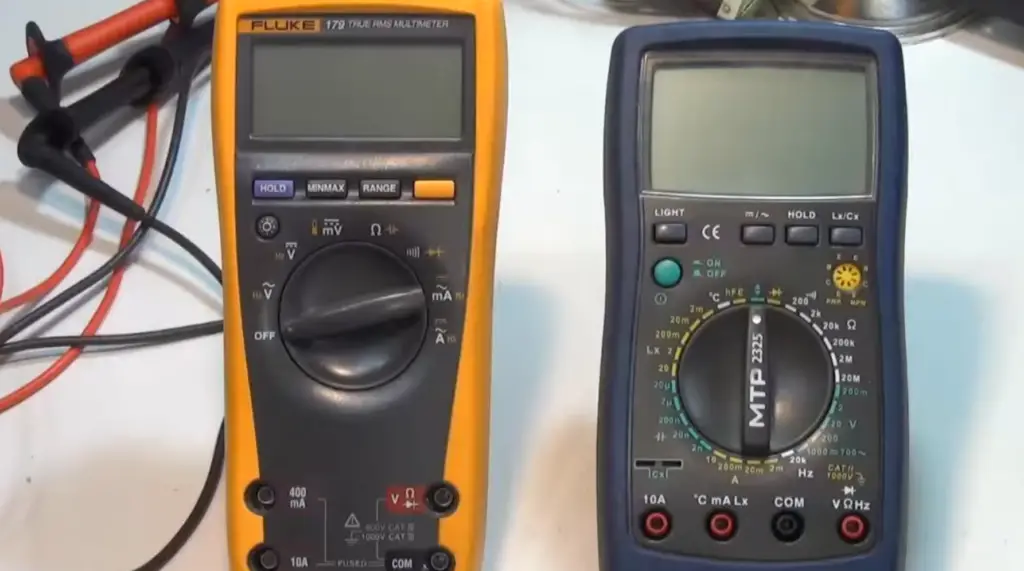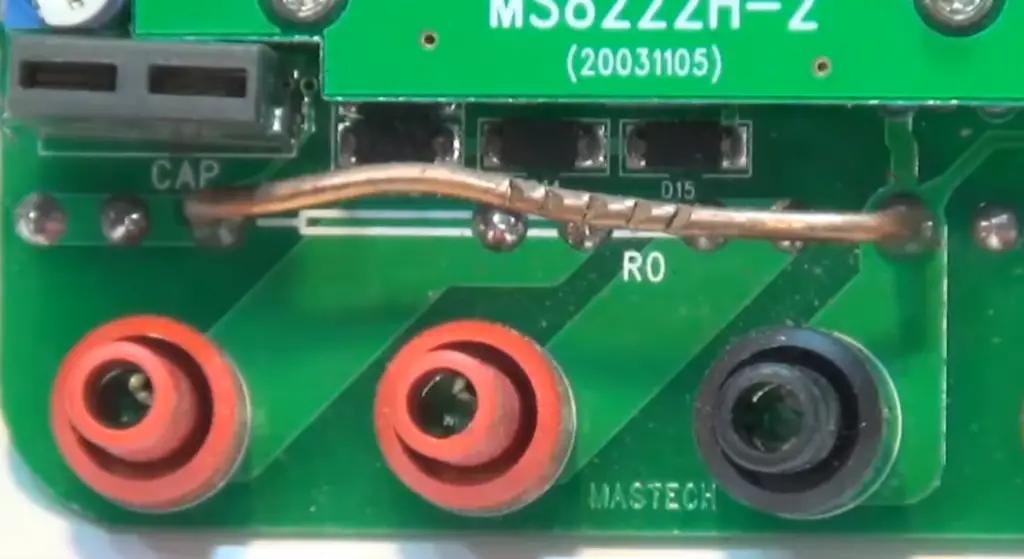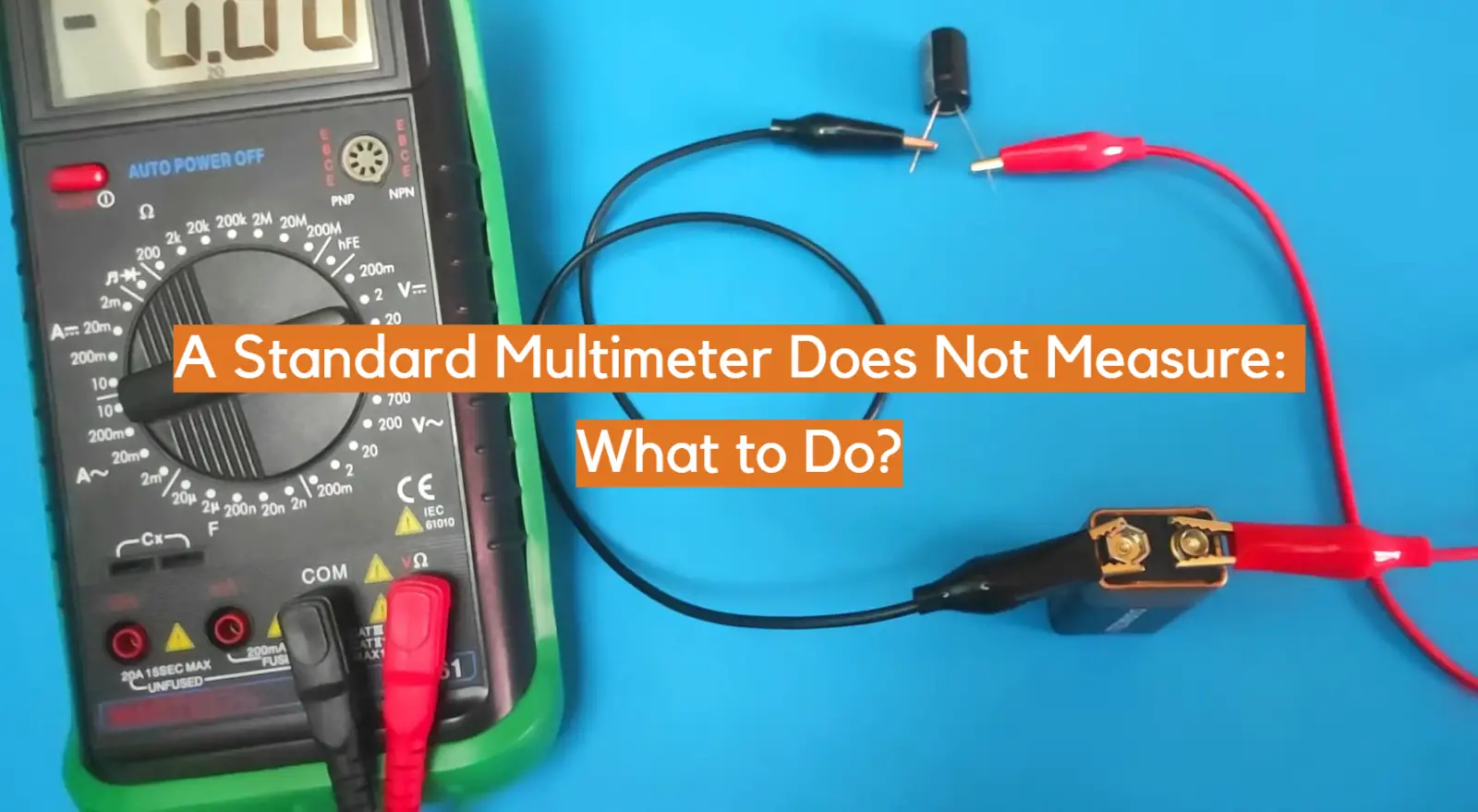Are you having trouble measuring things that a normal multimeter can’t? You’re not the only one! Multimeters are helpful for diagnosing, testing, and fixing electrical stuff. But they have their limits.
In this blog post, we’ll talk about what a basic multimeter cannot measure and how to fix it.
If you are a professional mechanic or someone who likes to fix things, it is important to know the abilities of your tools. This will help you succeed when trying to figure out what is wrong with complex electronics.
Let’s dive into what a typical multimeter is not capable of registering so you can get back to fixing whatever problem may be giving grief.
What is a Multimeter?
Multimeters come in all sizes from small to big. They are important for anyone who works with electronics or electric circuits.

What do Multimeters Measure?
A multimeter measures the following:
- Voltage
- Current
- Resistance
The voltage measures the energy in a circuit, while current tells you how much electricity flows through it.
Some Multimeters May Also Measure
Some multimeters can also measure frequency, temperature, and capacitance. Frequency tells you how often electrical signals repeat.
Temperature measures the hotness or coldness of a surface. Capacitance is an ability to store electricity in something like a capacitor. [1]
A Standard Multimeter Does Not Measure What?
A standard multimeter cannot measure many things like humidity, pressure, sound levels, and insulation resistance. Luckily, there are additional tools available to measure these things.
- Humidity is the amount of water vapor in the air. A hygrometer measures this.
- Pressure is used to measure how much force is being pushed against a surface. You’d use a pressure gauge to measure this.
- Sound levels are measured in decibels and need a sound meter to register this.
- Insulation resistance is the resistance of an electrical material when it is exposed to insulation, you would use an insulation tester for this.
A Standard Multimeter Does Not Measure: What to Do?
If you need to measure anything besides voltage, current, and resistance then you will need to use a specialised tool that is designed for the task. That being said, if you have basic needs a standard multimeter should do just fine.

What is the Accuracy of a Digital Multimeter?
Digital multimeters can measure very small amounts of electricity. They will give you the same answers over and over again, so you can trust that they are giving correct information.
The digital multimeter also helps reduce any errors caused by other electric signals nearby. [2]
How Do Digital Multimeters Provide Consistent Readings?
Digital multimeters are designed to give consistent readings by filtering out noise and other interference.
They have filters that isolate the signal, so you don’t get false information due to background signals.
Digital multimeters also use a variety of algorithms that help make sure they are giving you accurate measurements.

What is Meant by Resolution in Measurement?
Resolution is a measure of how much detail the multimeter can show. Digital multimeters usually have better resolution than analog multimeters, so they can give more exact readings.
The resolution is usually shown as a number that tells us how many digits the meter can read correctly.
What is the Range of a Multimeter?
Multimeters have a range, which is the maximum amount of voltage, current, or resistance that it can measure. It is important to choose a multimeter with the proper range for your needs. Some multimeters can measure up to 600 volts while others can measure up to 10,000 volts.
What is the Difference Between Counts and Digits?
Counts refer to the resolution of a measurement, while digits refer to the accuracy. Counts are given in numbers like 5 or 6, which tell us how precise it can measure something.
Digits refer to decimal accuracy and are usually represented by a number preceded by an “X” such as X10 or X100. This tells us how accurate the measurement can be.

FAQ
What does a multimeter measure?
A multimeter measures voltage, current and resistance. Voltage tells you the potential difference between two points in a circuite, current tells you how quickly electrical energy is moving through a circuit and resistance tells you how much opposition an object has to the flow of electricity.
Can a multimeter be used to measure capacitance?
Some multimeters are capable of measuring capacitance as well as voltage, current and resistance.
However, these types of metres are usually more expensive than standard multimeters.
Can a multimeter be used to measure temperature?
No, a multimeter cannot measure temperature. You will need to purchase a thermometer if you want to measure temperatures.
Can I use my multimeter as an oscilloscope?
No, a multimeter is not suitable for use as an oscilloscope. An oscilloscope is used to measure and analyse waveforms, which a multimeter cannot do. You will need to purchase a separate specialised oscilloscope for this purpose.
Can I use my multimeter to test insulation?
No, you will need an insulation tester for this purpose. An insulation tester is designed to measure the resistance of an insulating material.
It is important to use an insulation tester when working with electrical components and wiring as it can help prevent accidents.
When not to use a multimeter?
You should not use a multimeter when working with high voltage, as it can be dangerous.
Also, do not use a multimeter to measure voltage across a load that is connected to an AC power source as this could damage the meter or cause electric shock.
If you are in doubt about whether or not to use a multimeter for a certain measurement, you should consult a qualified electrician.
What are three things you can measure with a multimeter?
You can measure voltage, current and resistance with a multimeter. Voltage tells you the potential difference between two points in a circuit, current tells you how quickly electrical energy is moving through a circuit and resistance tells you how much opposition an object has to the flow of electricity.
What should I consider when choosing a multimeter?
When choosing a multimeter, consider the type of measurements you need to make, the range and resolution you require, as well as any safety features that may be necessary.
Digital multimeters usually offer higher accuracy with more resolution than analog multimeters.
Why is my multimeter not reading continuity?
If your multimeter does not read continuity, it is likely that the probes are not making good contact with the component or circuit you are testing.
If this does not solve the problem, check if your multimeter’s continuity mode is set correctly.
What are the possible causes for a multimeter to give an incorrect reading?
Possible causes for inaccurate readings from a multimeter include faulty probes, incorrect settings or calibration, poor contact between probes and circuit elements, and interference from other electrical components.
If the readings seem to be consistently off, it is best to check the meter’s calibration or replace it if necessary.
Are there any safety tips to follow when using a multimeter?
Yes, when using a multimeter it is important to always take the proper safety precautions.
This includes making sure that the probes are properly insulated and rated for the voltage being measured, never taking measurements in wet or humid conditions and avoiding contact with high-voltage components.
It is also important to read the user manual before using a multimeter, as it contains information on proper use and safety precautions.
How do I know if a multimeter is suitable for my application?
When selecting a multimeter, it is important to determine what type of measurements and functions you need.
Consider the types of measurements you are likely to make, the ranges and resolution needed, along with any necessary safety features. It is also wise to check the user manual or contact the manufacturer for advice.
How can I troubleshoot an electrical circuit with a multimeter?
Using a multimeter to troubleshoot an electrical circuit is a great way to identify and solve problems quickly. To do this, you will need to test each component in the circuit with the meter, checking for things like shorts, opens, voltage drops and other irregularities.
It is important to make sure the multimeter is set to the correct function and range before taking any measurements.
How often should I check the calibration of my multimeter?
It is recommended that you periodically check the calibration of your multimeter according to manufacturer’s recommendations.
If you are using a digital multimeter, it is best to reassess its accuracy at least once every two years. It is also important to recalibrate after making any major repairs or adjustments to the meter.
What other features should I look for when buying a multimeter?
When buying a multimeter, there are many features you may want to consider beyond basic voltage and resistance measurements.
Some of these include temperature and capacitance testing, data logging capabilities, audio output signals, backlit LCD displays and auto-ranging functions. Depending on your application, these additional features may be beneficial.
Does a multimeter measure AC or DC voltage?
Most multimeters are designed to measure both AC and DC voltage. On some models, the two types of voltage can be measured with different settings on the meter, while on others they can be tested in the same mode.
It is important to refer to your user manual to determine how your specific model measures AC and DC voltage.
Do I need a specialised multimeter for measuring frequency?
Yes, in order to measure the frequency of an electrical signal you will need to use a specialised multimeter that is designed for this purpose. These metres normally have a built-in oscilloscope and are able to measure both AC and DC signals.
They also usually come with features such as automatic range selection and data logging capability.
What is the best way to store a multimeter?
It is important to properly store your multimeter in order to ensure its accuracy and longevity. It is best to keep it in a clean, dry area that is away from direct sunlight and other sources of heat or humidity.
Does a multimeter require regular maintenance?
Yes, it is important to regularly maintain your multimeter in order to ensure its accuracy and reliability. This includes cleaning the probes, contacts and other parts of the meter using isopropyl alcohol.
Additionally, it is important to periodically check the calibration of your multimeter according to manufacturer’s recommendations. It is also wise to refer to the user manual or contact the manufacturer with any other questions regarding maintenance and use.
Can a multimeter measure current?
Yes, most multimeters are capable of measuring both AC and DC currents. When doing so, it is important to refer to the user manual for any specific safety precautions that should be taken.
Additionally, some models come with an additional feature called auto-ranging, which will automatically adjust the measurement range in order to provide the most accurate results.
Can a multimeter be used to detect shorts and openings?
Yes, a multimeter can be used to detect shorts (low resistance) and opens (high resistance) in electrical circuits. It is important to take the appropriate safety measures when doing so, such as using insulated tools and wearing protective clothing.
Additionally, it is important to refer to the user manual for information on how to properly use the multimeter’s measuring function.
Useful Video: How to Check Multimeter is Working or Not? | Digital Multimeter Tutorial
Conclusion
The standard multimeter is an incredibly important tool for anyone who works with electricity or electronics. However, it cannot measure every type of electrical or electronic component in existence.
If you require accurate measurements of these components, then you must use specialised test equipment such as a LCR meter or infrared thermometer.
Of course, these pieces of test equipment can be expensive, so do your research first to ensure that you purchase precisely what you need. Remember – always take safety precautions when dealing with electricity!
If you are still having trouble, there are people online who can help you with electrical problems. Ask them questions if you have any. Buying good tools can also save money in the long run and make doing things easier.
Lastly and most importantly, practice caution whenever working with electricity and ensure you keep up with necessary maintenance on both specialist tools and standard multimeters alike.
References
- https://handtoolsforfun.com/a-standard-multimeter-does-not-measure-what/
- https://www.fluke.com/en/learn/blog/digital-multimeters/accuracy-precision














Leave a Reply